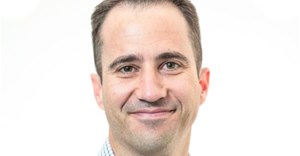Trending
Elections 2024
Making Magic for mining

Successful mining companies closely monitor assets/expenditures, risks, and other parameters associated with their business to best ensure their longevity. In most mineral industries, there are a few competitors that dominate the delivery of a mineral resource. As a result, technological development, along with other factors, are critical to ensure that these companies’ business remains viable and protected.
Technological development in mining generally translates to how a company can extract a resource from the ground better, faster, and safer, says Dr Martin Clark, post-doctoral fellow in the Department of Geology, University of the Free State.
He believes the rapid development of drone technology represents a shift in the toolbox that mining companies can employ. “Drones can collect a great deal of data randomly over vast or small areas within hours, historically accomplished by mapping campaigns which can last months to years. Drones can also collect data in areas which are difficult and dangerous for humans to get to. These include cliff faces or rock walls that are difficult and dangerous to get close to, as well as stretches of land where dense vegetation, inaccessible terrain, and even atmospheric dangers become factors which reduce or modify the scope of exploration work."
How Magic works
Clark’s work specifically focuses on expanding the applications for which drones are used. “I assess what and how good the imaging capabilities of drones are, use the imagery to generate 3D models to drive scientific observation, and yield results which can help companies to extract resources. This initiative is called Magic (multi-purpose aerial geological image classification),” he says.
“Magic aims to collect geological and structural information that is critical for making informed decisions in exploration and mineral extraction processes,” he adds.
Clark is not only the founder of Magic; he also drives multiple aspects of the initiative including education, research, and business development.
In 2013, when he was busy with his doctorate, there was already a spark of interest in using drones to address geological questions. At that time, Clark was working with remotely sensed high-resolution LiDAR imagery to better understand geological structures at the Sudbury Mining Camp in Canada. The interest became a reality in 2018, when he applied this initiative during his post-doctoral fellowship at the UFS.
“At present, there are no direct mining projects underway, but projects are expected to begin in 2020. Drone operation and image-analysis techniques are currently being refined for industry,” he says.
Besides his work with drones, Clark also works in the fields of structural geology, remote sensing, and geospatial data analysis.















